The Little Slippers from Amorgos
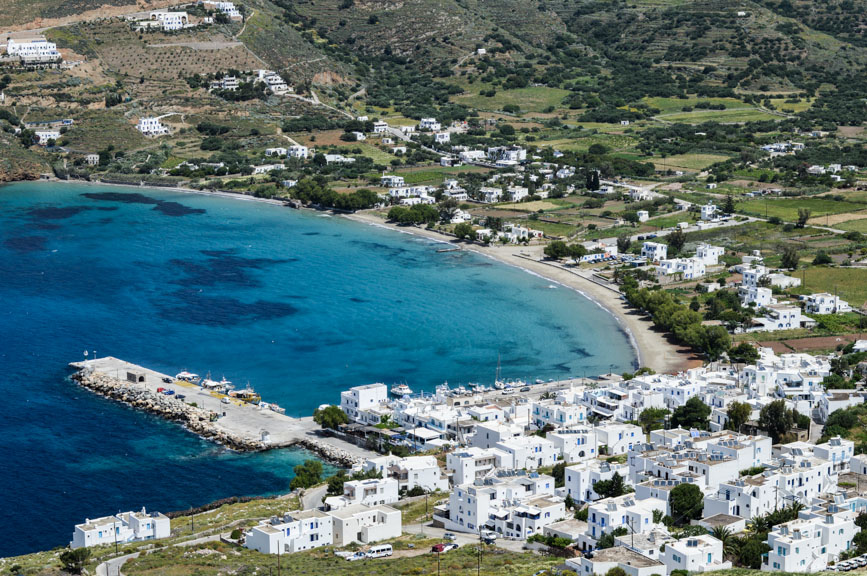
“If you want to be a good cook, you need a lot of onions.” Andonis, founder of To Limani tis Kyra Katinas , the taberna in Aegiali, Amorgos
It is eight in the morning on the Greek island of Amorgos and we are busy over the stoves in the kitchen of Katina’s taberna with Lia. Lia is the cook at this family-run restaurant in the town of Aegiali and has graciously welcomed our curious selves into her “office” as she miraculously juggles preparing about 10 dishes simultaneously. I struggle to keep up with my notepad in hand, smelling and observing all the deliciousness she is teaching us.
Not every morning began this early for us on the island of Amorgos where the peaceful silence was only occasionally pierced by a small crow’s wings or church bells calls. Sometimes there was also the loudspeaker announcement from a chicken selling truck which mysteriously seemed to follow us every where as we island-hopped in the Aegean Sea to make our way to Turkey’s shores. “κοτόπουλο! Katopoulo! Katopoulo (Chicken)!” Most islands locally rear only sheep, goat and cattle so from Amorgos, to Astypalea to Kos, the chicken guy repeatedly appeared in street corners and hilltops, quickly becoming an easy guessing-game as to where the truck was since the stench was detectable as long as we were downwind from it.
The island fragrances imprinted on our minds however are of a different kind. Amorgos in April was a living garden, a vibrant herb box a wild flower haven. The gentle breeze or strong wind only serve to spread its flowers and scent even further, I have rarely seen such beautiful wilderness, effortlessly resembling a botanical garden. The delicate red poppies, daisies and buttercups are contrasted by the sturdy thyme, rosemary and oregano. They all hang tightly to rugged mountains, soaring high above the misty clouds before plunging into the turquoise blue bays.
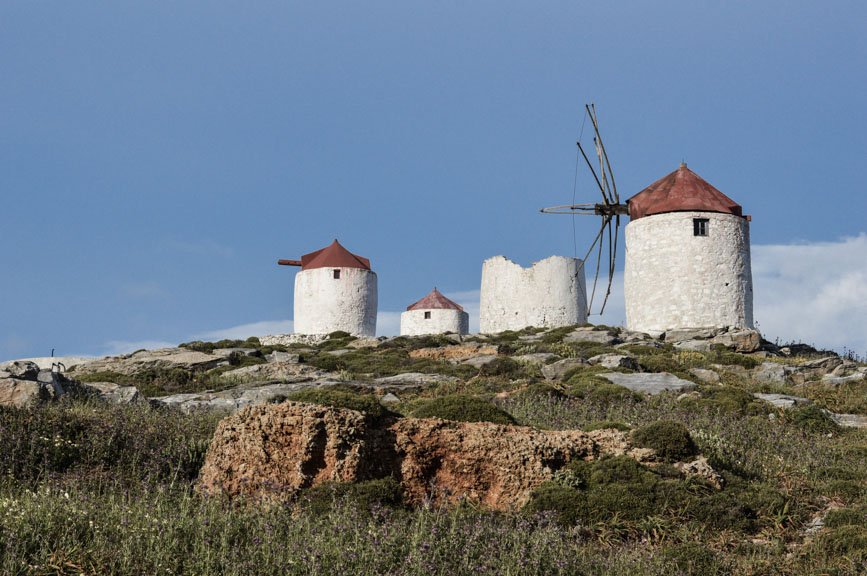
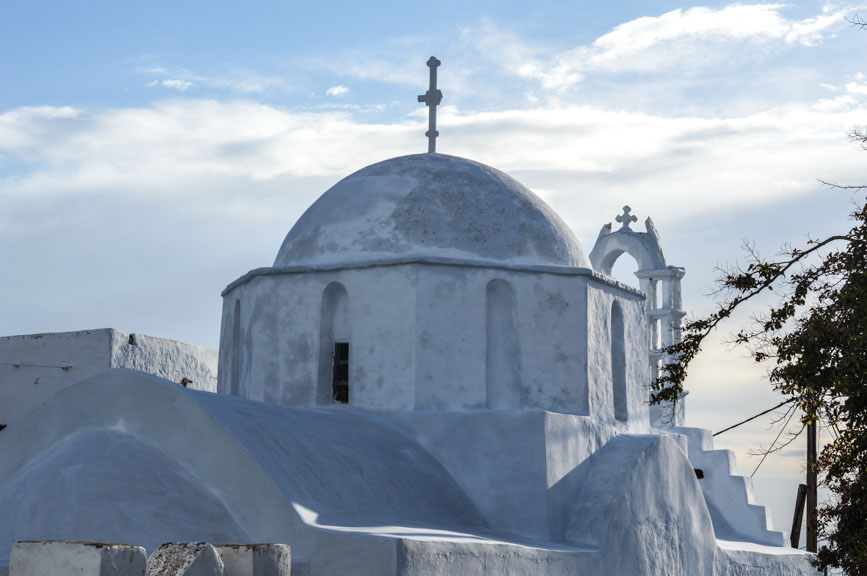
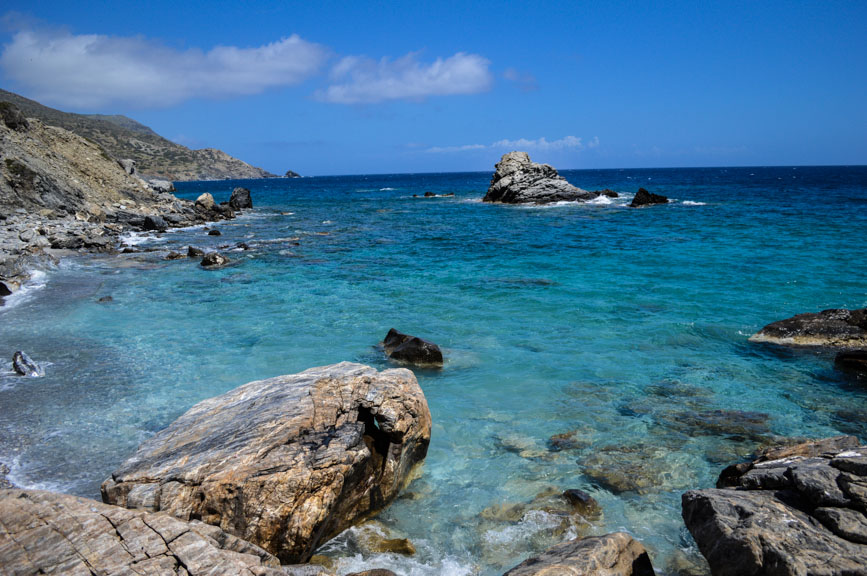
One of the islands in the Cyclades /ˈsɪklədiːz/, Amorgos is considered small, but still represents 40km of distance to explore. It may not seem like much, but every small town has its own feel and is well-known for something unique. Among its many fiestas for example, on the 26th July there is a town famous for its Patatado (lamb and potato stew) and the hill of bread it creates to feed everyone on the island. I dream of the day we can go back to witness and eat this hill of bread soaked in Patatado juices. Every Greek island has its Chora, which was the original capital of the island in the past. Amorgos’ Chora is situated at the top of a gorgeous valley, surrounded by ancient agricultural terraces and guarded over by stone windmills. It has a stunning church at the top of a big central rock and like any other church on the island is pristinely kept, whitewashed and shiny.
Unsurprisingly, the beaches are spectacular, though nothing could prepare us for Ammoudhi Bay. I hesitate to reveal it here as you almost want to keep it a secret, but it is slightly more challenging to reach which limits the number of people you have to share its transparent waves with. It is an hour’s hike down from the main road to get there, but the reward of having a five star bay to yourself is worth it.
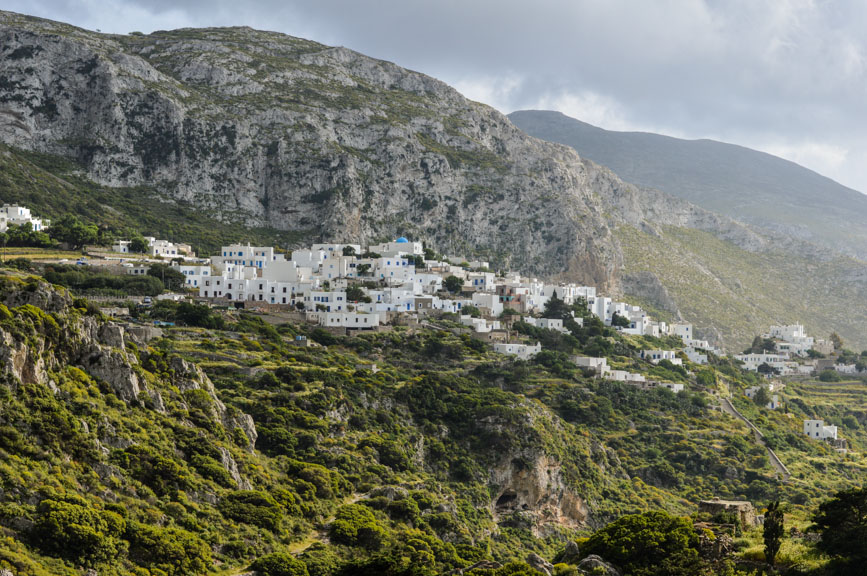
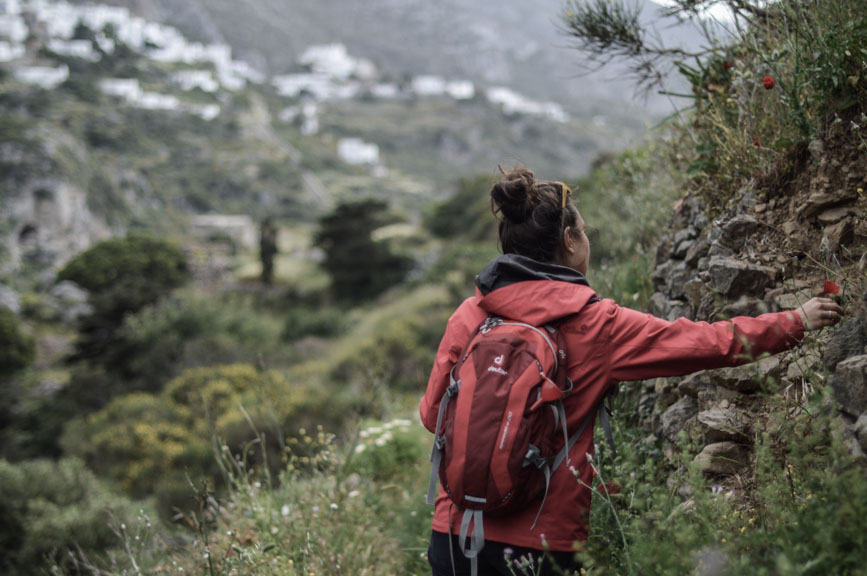
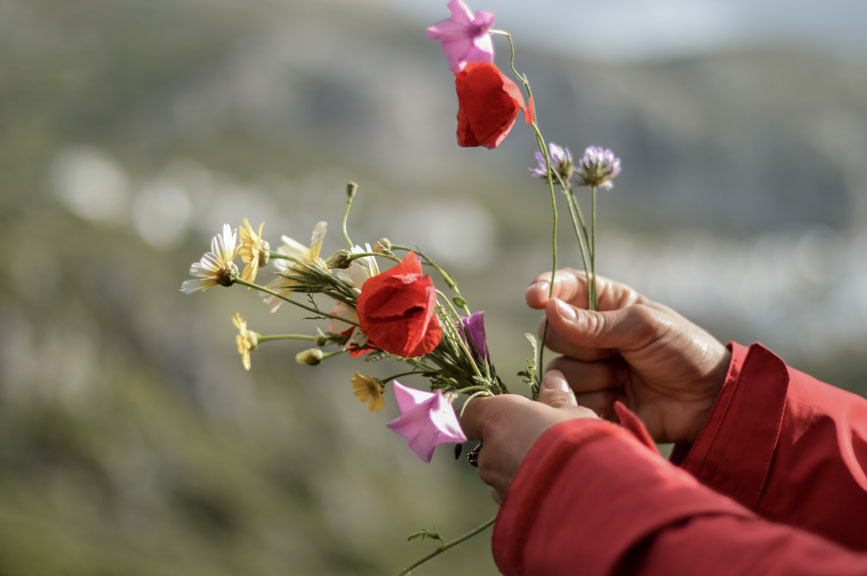
After exploring and relaxing it was time to get down to business and learn about the island’s food. The Nomikos family, composed of Panagiotis and Theo together with their respective wives Lia (short for Cornelia) and Puki, has a long history of culinary tradition on the island and were happy to share some of their family recipes with us, emphasizing how they are cooks and not chefs since it is all about home-cooked food. Their taberna, To Limani Tis Kyra Katina, is named after their mother, who was famous with travellers for her smile and kindness. Their father Andonis spent his early working years cooking on boats before opening Katinas around 1980 when tourists first came to the island.
Their parents’ legacy is now being taken care of by their children, with Lia being in charge of the kitchen and Panagiotis taking care of fish acquisition and preservation. Theirs is a great story of how an island can win your heart. First meeting as students in Ioannina, Panagiotis from Amorgos and Lia from Thessaloniki, they fall in love and get married before deciding to leave their original careers of veterinarian and archaeologist for life on the island.
Moving to Ioannina from Thessaloniki as a student, Lia had brought recipes from home with her. Traditionally northern dishes are more heavy on meat and vegetables such as lamb with zucchini and chicken with okra. Arriving on Amorgos in 1986, she began working her way up in the kitchen, helping around in the taberna, before learning to cook island classics from the calm Andonis.

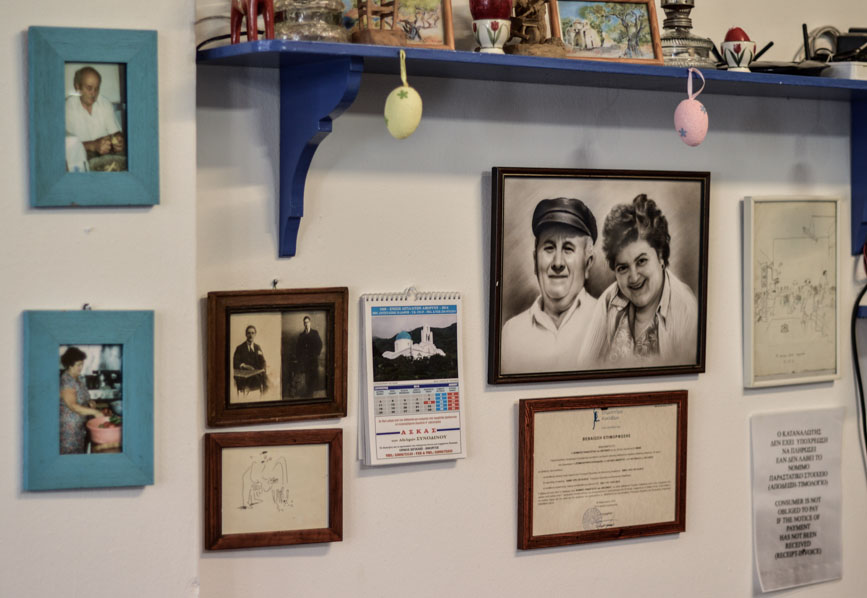

“It is a big difference to cook for a family and to cook for 50!” laughs Lia, but she has definitely perfected this skill as we accompanied her that day. “It is more difficult for women to become chefs, often we have to work at night, which makes taking care of children more difficult and when it is about cooking in large quantities, it is actually a heavy lifting job!” she explains, lifting a hefty pan from the stove.
Compared to the north, island cuisine tends to be more abundant in fish and herbs. The over 100 different types of horta (herbs) carpeting the island, not only smell good, but are used in different pies and dishes. While they can get ingredients like meat and cheese fresh from the island, sometimes it is difficult to get other products, so every March they go on an expedition to Athens, buying staples like flour and spices for the rest of the year. Things are changing rapidly though, with the growth of the tourism sector, more farmers cultivate local vegetables now than before as they know they have a larger market through all the restaurants catering to hungry tourists. “Everybody lives from tourism,” Lia says, “from the builder to the fisherman to the goat herder.”
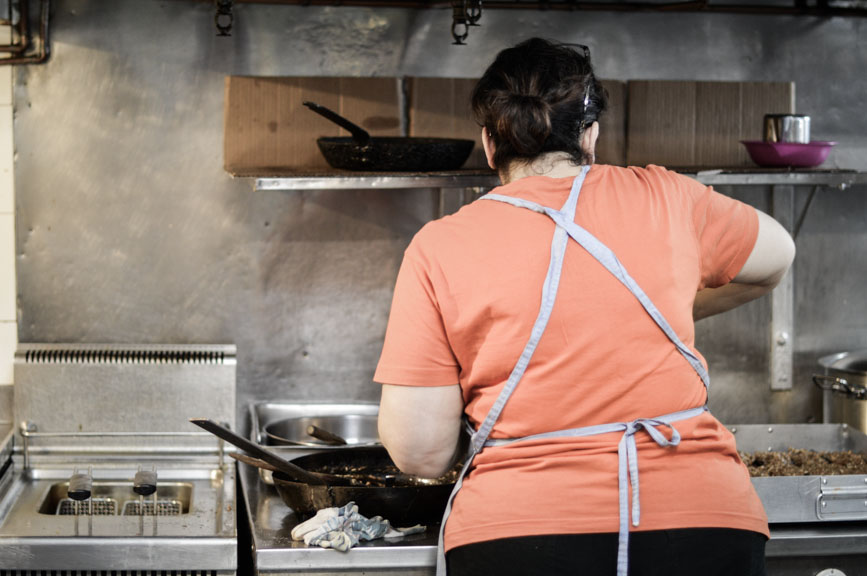
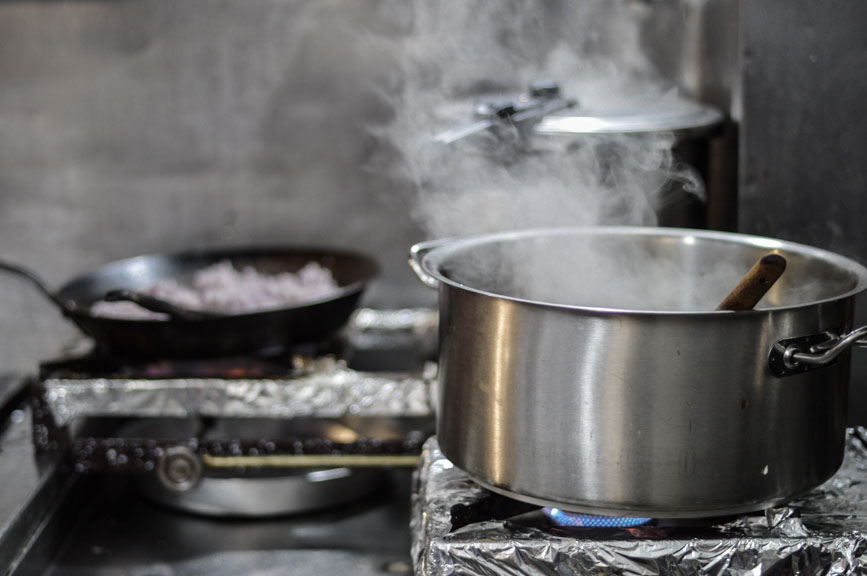
In their kitchen, you can spot many of the greek staples such as tomato paste, onions, more onions, dill and gorgeous little olives from Amorgos. I was surprised at how much dill is used in greek cuisine, always having associated it with Scandinavian cuisine more than as a Mediterranean flavour. Upon seeing it blooming wildly all over the island though, all is illuminated. Lia has prepared the menu for the day as we enter their large open kitchen, each night it is decided based upon the variety of ingredients available. We are excited as she runs us through the agenda – the traditional Patatado (classic island stew of lamb or goat and poatatoes), black-eyed peas and spinach (μαυρομάτικα με σπανακι) , zucchini fritters (kolokithokeftedes) , meatballs in tomato sauce (soutzoukakia), white bean soup (fasolada) and the dish we have decided to feature – stuffed oven-baked aubergines (papoutsakia).
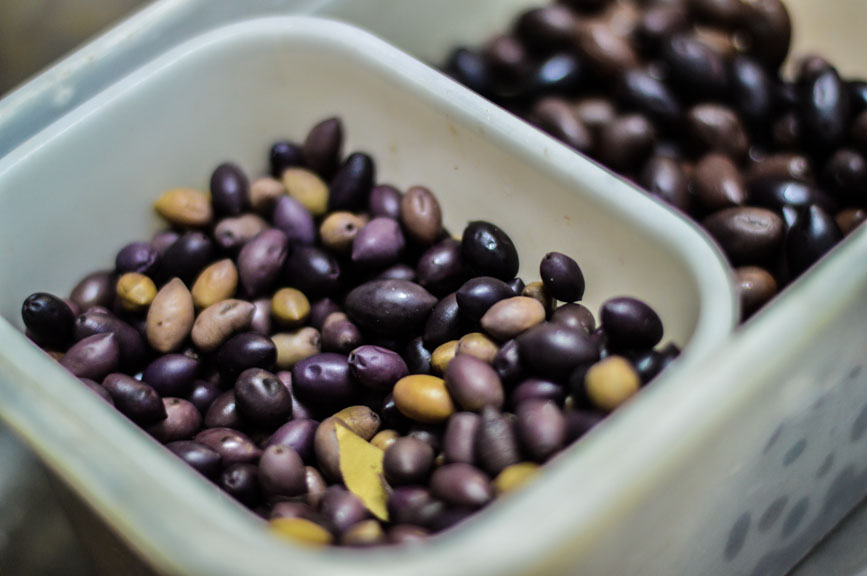
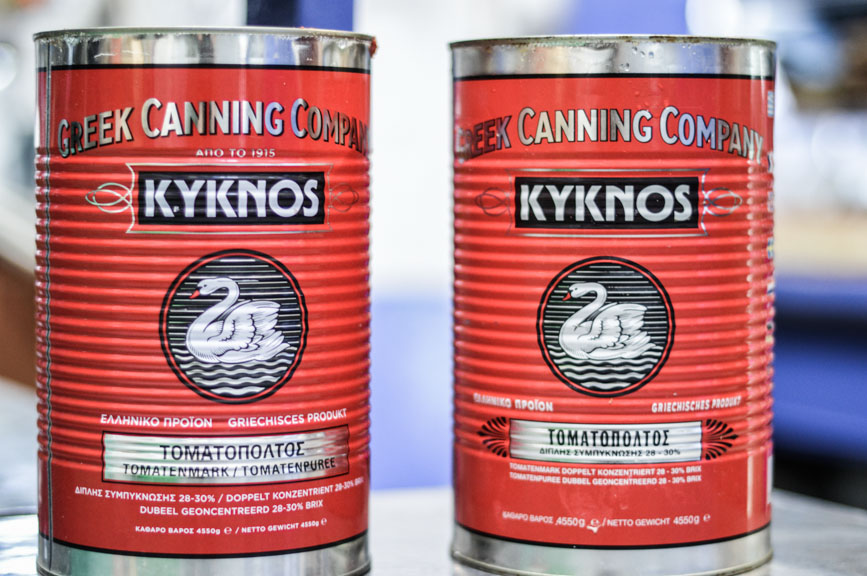
It is now ten in the morning, the lamb is simmering in tomato sauce, the bean soup is stewing in a pressure cooker, the meatballs are being mixed with ouzo and rolled into perfect little oblongs, the grated zucchini are being blended with a generous portion of chopped onions and the aubergines are “sweating”. We leave this intensive production line for a while to go fish shopping with Panagiotis. Moored along the pretty port of Aegiali are fishing boats back from the morning catch. Fishermen are cleaning their nets as we board the boat to choose our prize. At every port we have been to so far, it seems that the fishing profession involves just as much time cleaning nets as it does searching for fish in the open sea.
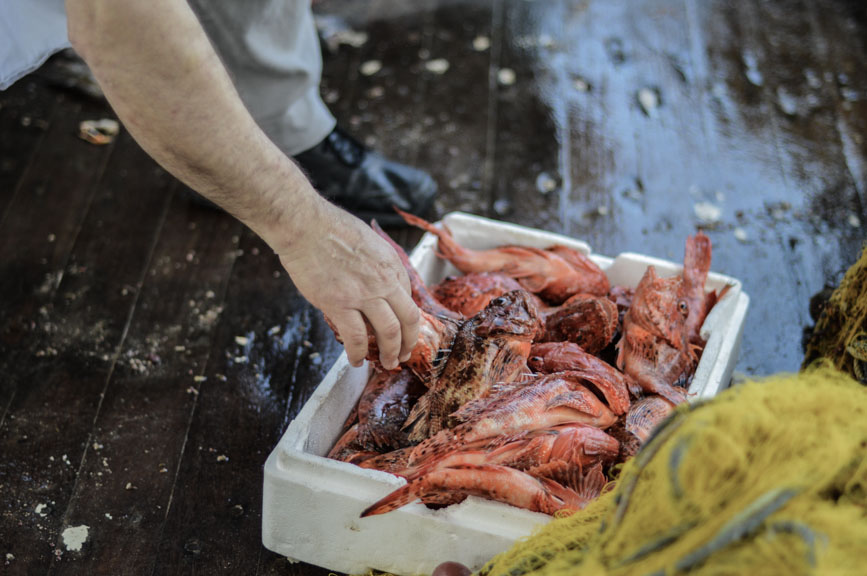

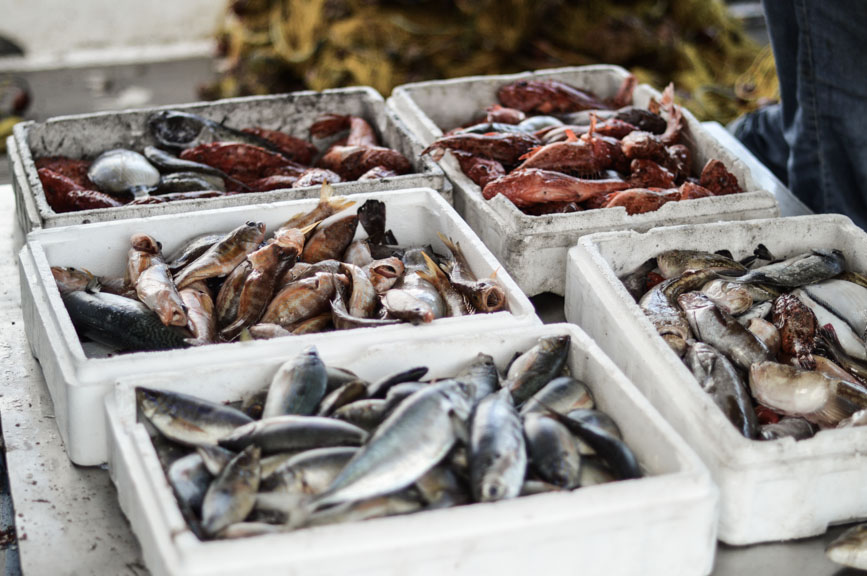
On board there are styrofoam boxes filled with restless lobsters, red snappers, branzino, grouper and countless ones I do not recognize.
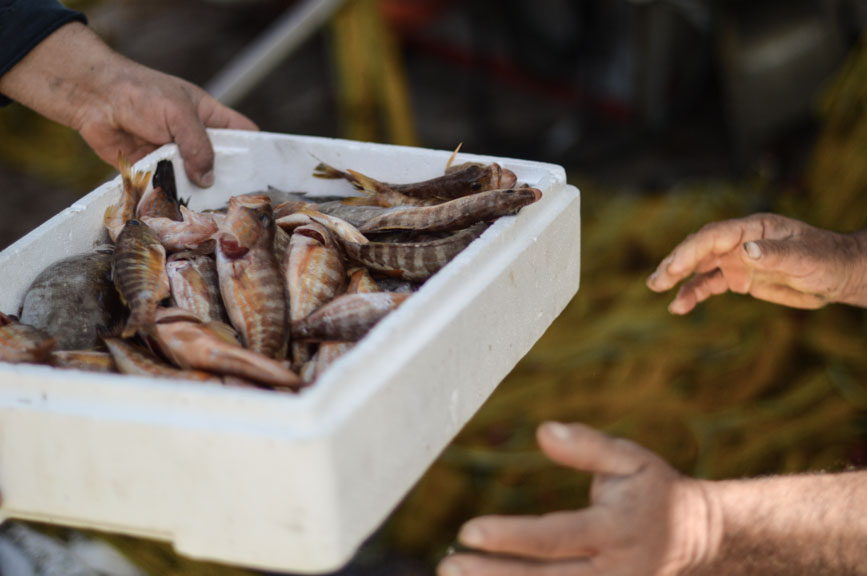
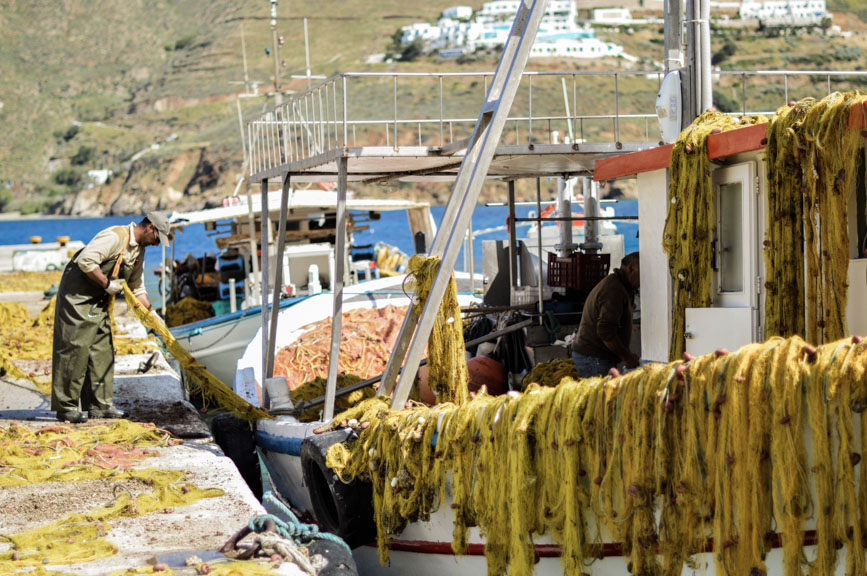
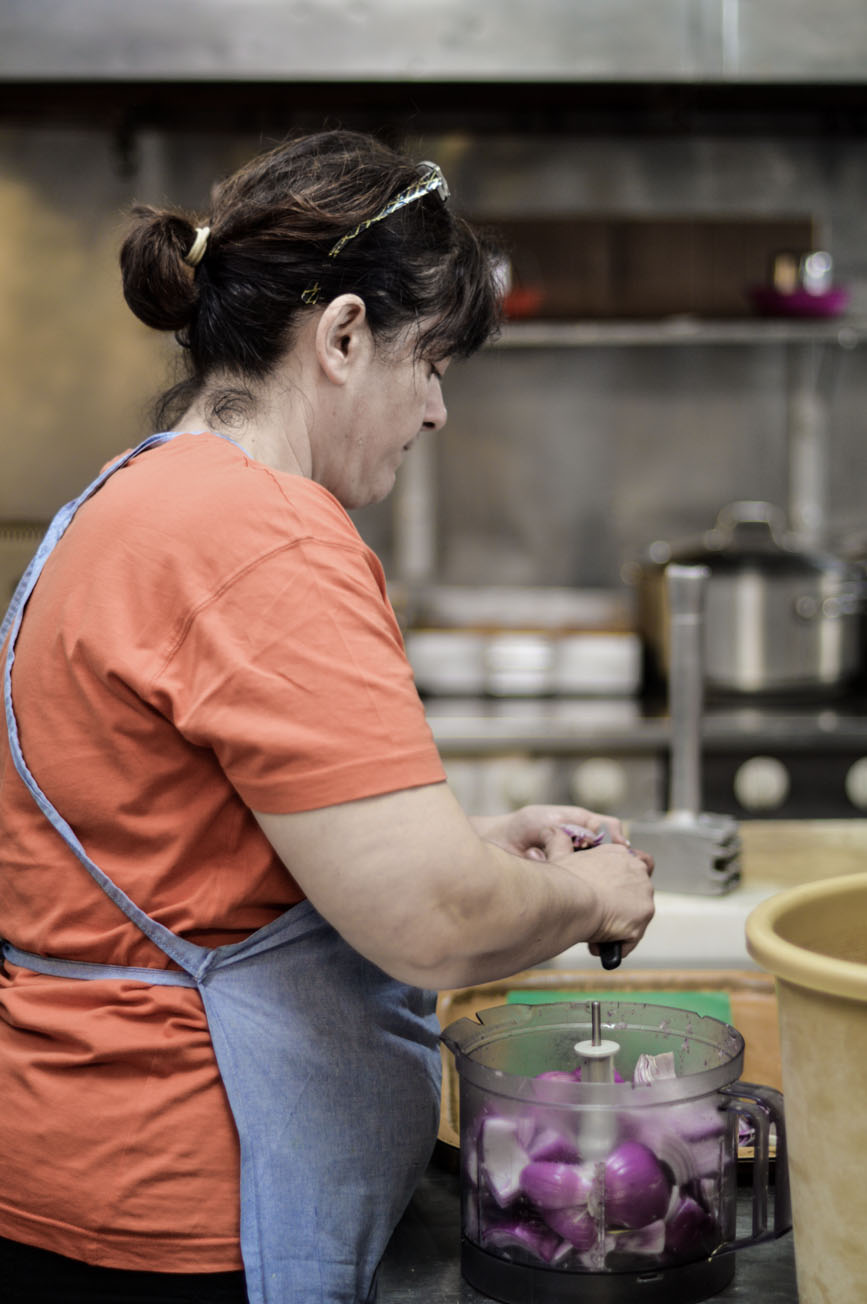
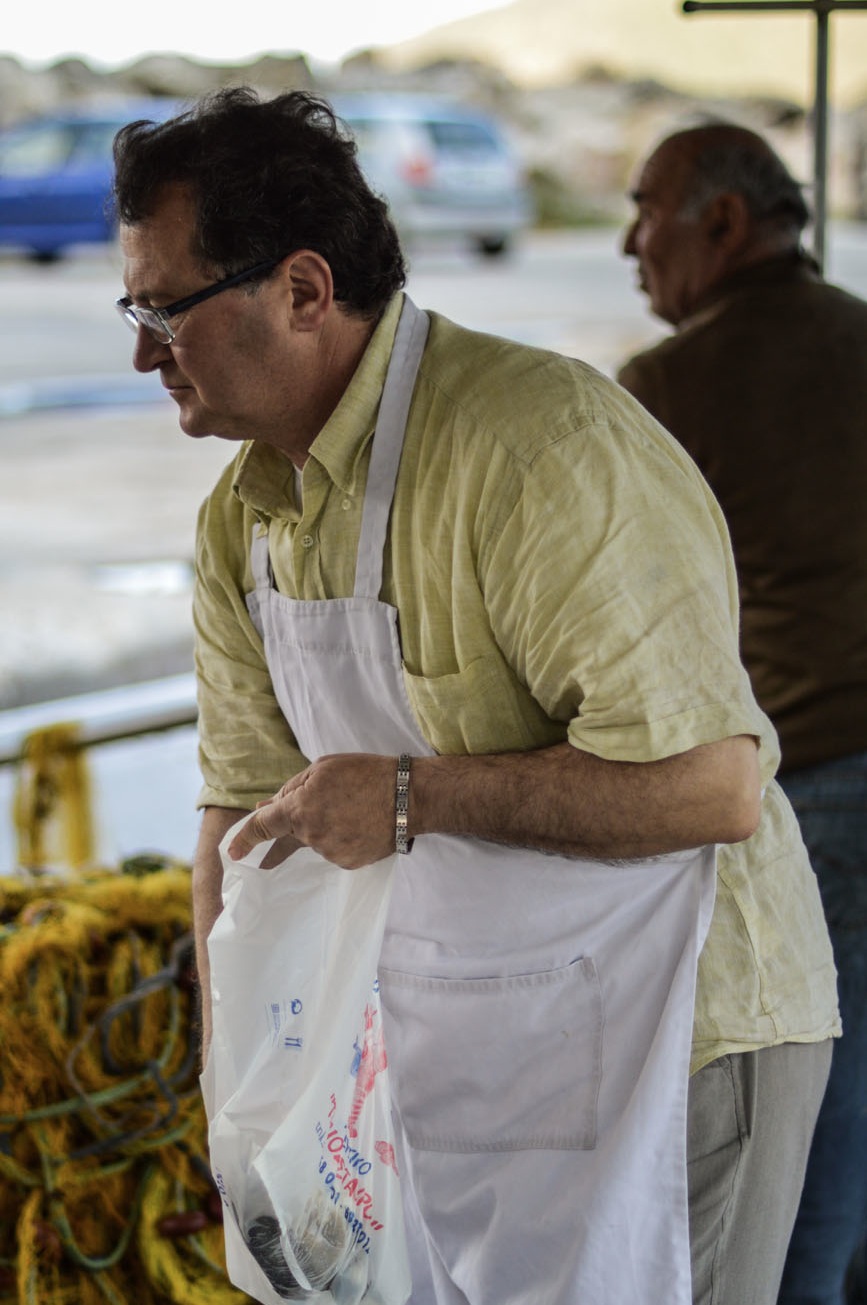
Panagiotis chooses them with care before we hoard our “catch” back to Katinas. Once back, he immediately sets to getting them ready for what I like to think of as the “Fish Hotel”. Keeping fish fresh is a challenge, but as a former vet, Panagiotis knows exactly what temperature each fish should be kept in to ensure the freshest produce possible. Layers of ice are poured into trays over the fish and changed frequently to ensure the fish stay dry. Pulling out various ice trays to show us, “this tray is for third-class fish and this for the V.I.Ps”, he jokes, pointing at small red specimens and larger beauties. “The V.I.Ps are for grilling and the third-class for frying.”
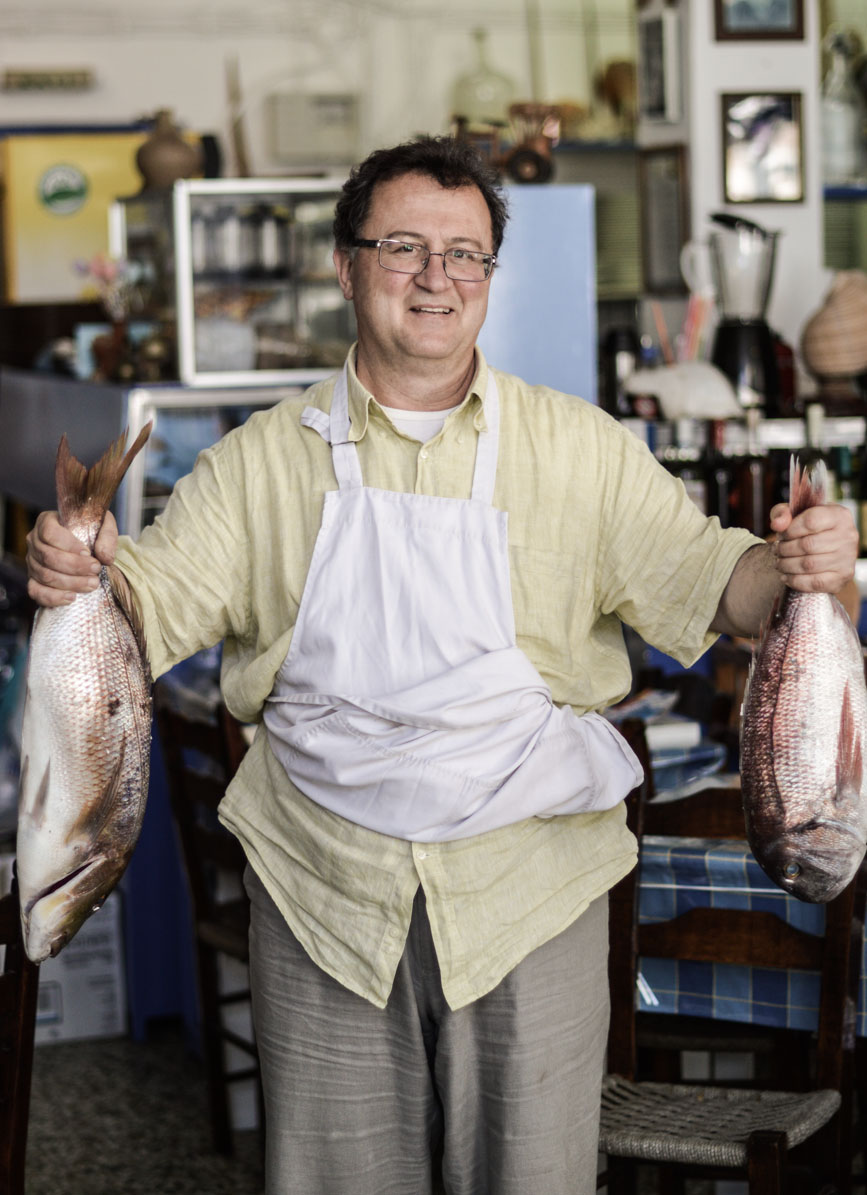
We continue our culinary experience with Lia, whose own children have expressed an interest in learning how to cook. “It is important that they have an open mind and palate,” says Lia, while many city greeks have increasingly less time to cook, relying on fast food and take-out, her family is lucky enough to have home cooked food daily and sample foreign foods whenever they travel. Working intensively in the summer months, they usually have 5 months off in the winter when they close down for the season. This means travel when possible which Lia is passionate about.
The menu at Katinas has remained true to Andonis, though there have been several changes to suit contemporary habits. The quantities are now smaller with more variety on the menu and one important notable change is the presence of gluten-free options. With more visitors being celiac or choosing a gluten-free diet, it was necessary to ensure that they would not miss out on all the dishes on offer. Gluten-free flour, gluten-free pasta, you name it.
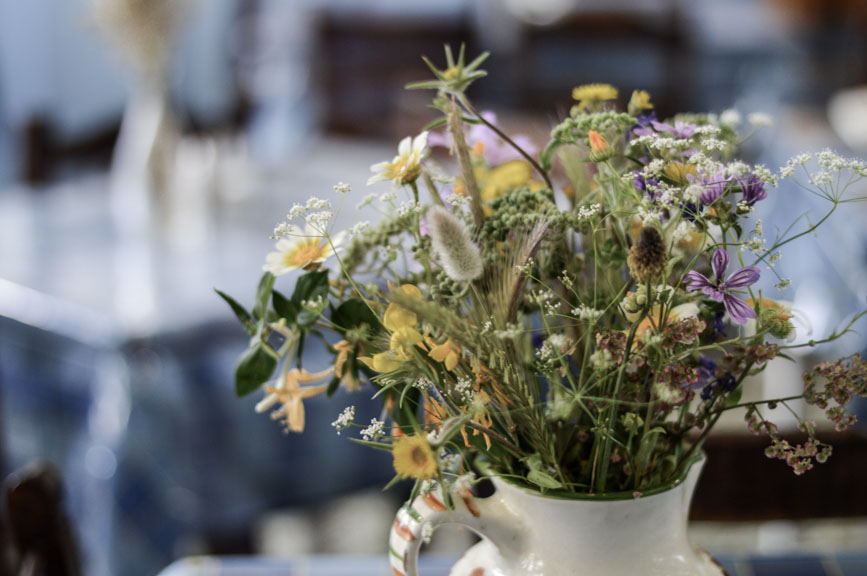
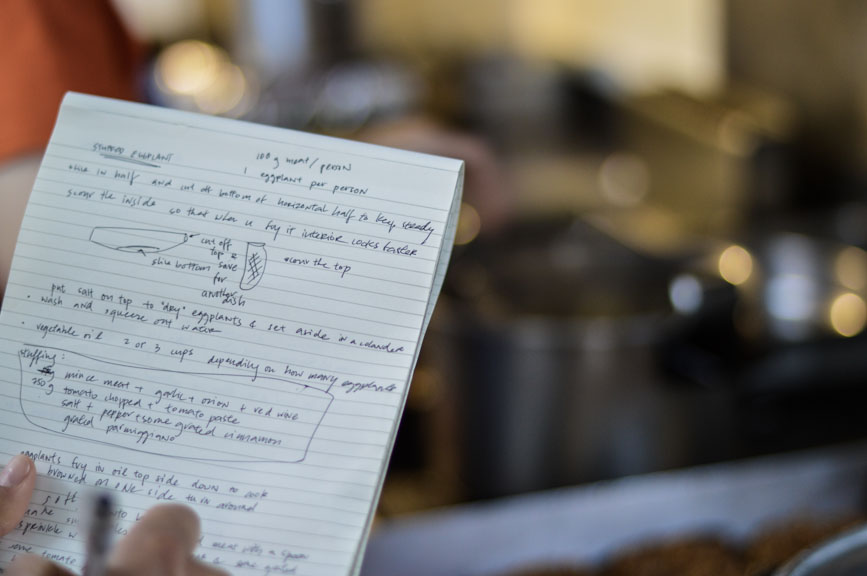
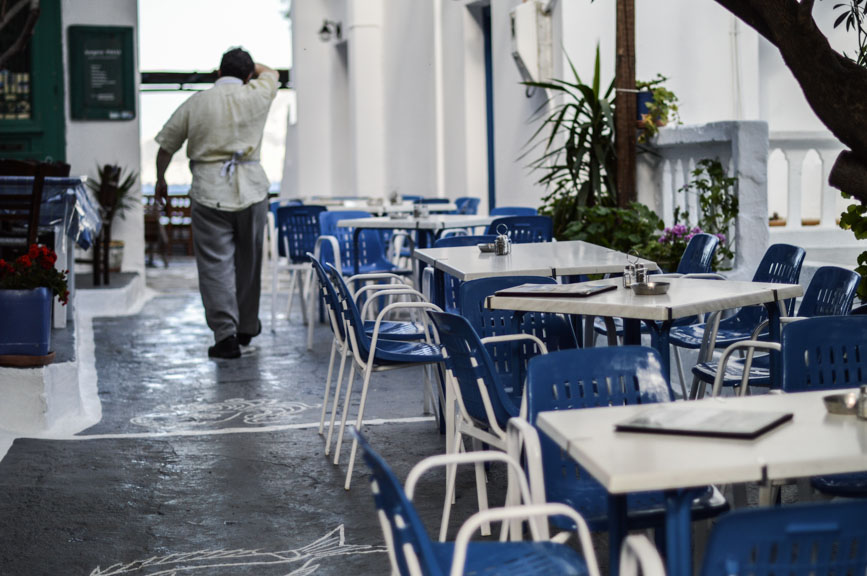
All in a good day’s work.
After a morning of cooking, we leave Katinas at around midday, with the promise of a tasting menu for dinner. “Come back for dinner so that you can taste everything we have made this morning.” Lia says.
The greek mantra of Eat Eat Eat holds true in Amorgos as well as we are treated to the entire menu of delicious dishes and we are excited to share this recipe for stuffed aubergines – “little slippers” with you. After yet another wonderful local cooking session, we are amazed by the hospitality and warmth we have received and rest assured that food remains one of the best ways to connect with people. We are extremely thankful to Lia and Panagiotis for opening their home and kitchen to us and hope that we will come back to Amorgos to cook for them too one day.
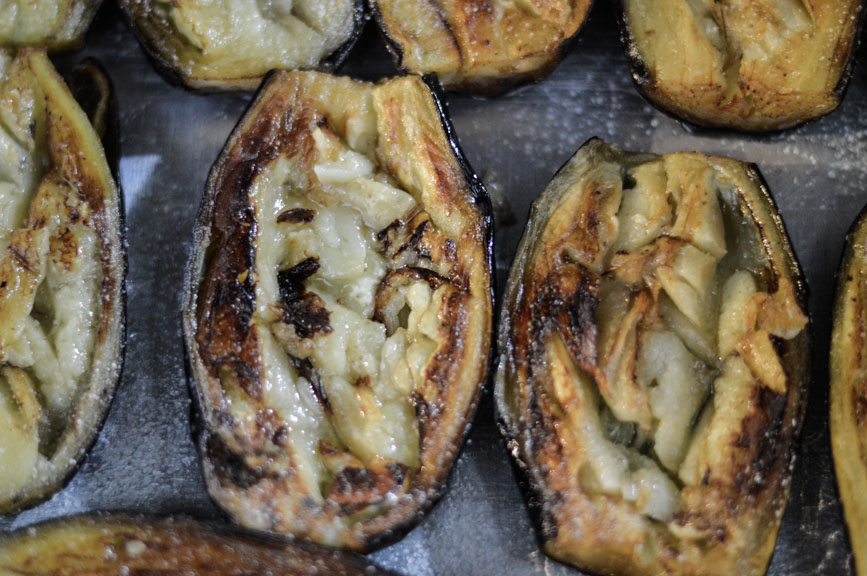
PAPOUTSAKIA παπουτσάκια \ˌpah-put-tcha-kia\
Papoutsakia means little slippers, very much like how the italians have ciabatta bread also meaning slipper. These aubergines are reminders of the same shoe shape, but definitely taste better than what it is named after.
Makes 6 portions
For the aubergines
6 large aubergines
1/2 cup vegetable oil
Slice the aubergines in half lengthwise and cut off a little piece of skin on the curved half so that they will be able to stand flat in the baking tray without rolling around. Sprinkle a generous amount of salt over the eggplants and place in a colander to “dry/sweat” them. Set aside and prepare the stuffing.
When the stuffing is ready, take your aubergines and squeeze out any excess amount of water, you can even dry them more with a clean dish towel if you like. Take a sharp pairing knife and slash the inside half of the aubergine with a criss-cross pattern until it resembles the skin of a pineapple. This will allow them to cook well inside and absorb all the flavour of the filling.
Heat the vegetable oil (it is better not to use olive oil here as it will make the eggplants too heavy and the heat will also destroy the beneficial components of the olive oil) in a deep pan and place the aubergines criss cross side down into the oil and let them simmer till they are browned on one side. Turn and let the other side simmer until they are soft and almost fully cooked through. Don’t let the oil get too hot or they will burn.
Place them in a baking tray, criss-cross side up and use a spoon to scrap and soften the interior, sprinkle with some salt, it is now ready to be filled with stuffing.
For the stuffing
500g minced beef
2 tbsp olive oil
1 clove garlic, crushed
1 small onion finely chopped
350g chopped tomatoes (about 3 big tomatoes)
2 tbsp tomato paste
1/2 cup red wine
1/2 tsp grated cinnamon
salt & pepper
1 tsp of granulated sugar
2/3 cup grated parmesan cheese for topping
1/3 cup breadcrumbs for topping
Heat the olive oil in a pan and add the onions. When they are soft, add the minced meat and garlic and sauté a little till almost cooked through. Add the chopped tomatoes and tomato paste and stir. When the tomatoes are incorporated, slowly poor in the red wine and let simmer till the sauce thickens.
Add the cinnamon, sugar and then salt and pepper to taste.
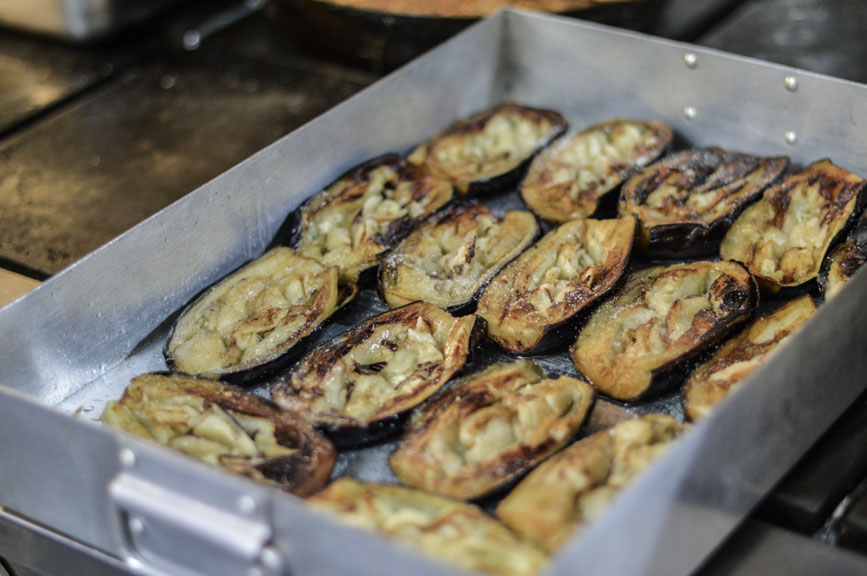
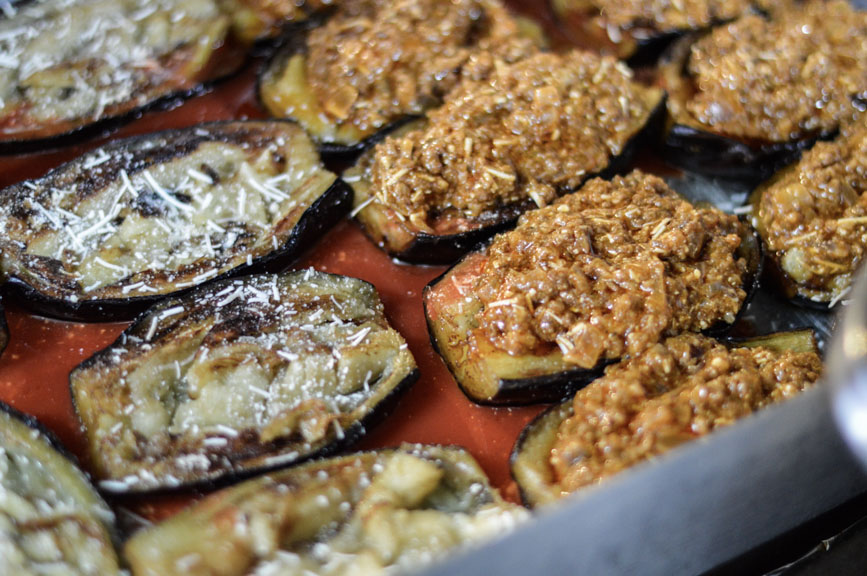
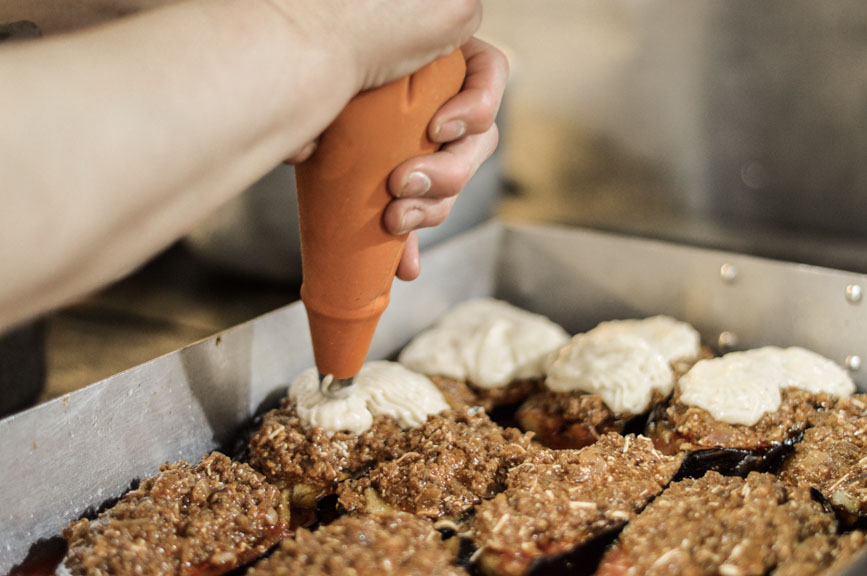
For the bechamel
40g butter
25g plain white flour
425ml room temperature milk
1/2 tsp grated nutmeg
salt & pepper
Over medium heat, melt the butter in a pot and once melted, add the flour and stir quickly with a spoon, it will resemble a paste. Once it is a paste, add the milk gradually and turn the heat down and stir until it reaches a cream-like consistency. I prefer to use a whisk here to make sure it stays smooth and glossy. Keep the bechamel over low heat as you add all the milk and continue stirring until it becomes thicker. If you are used to making bechamel, you will see that this should be a bit thicker than your usual sauce as you want to pipe it out on top of the aubergines later.
Stir in the nutmeg and salt and pepper to taste, turn off the heat and let cool down a little.
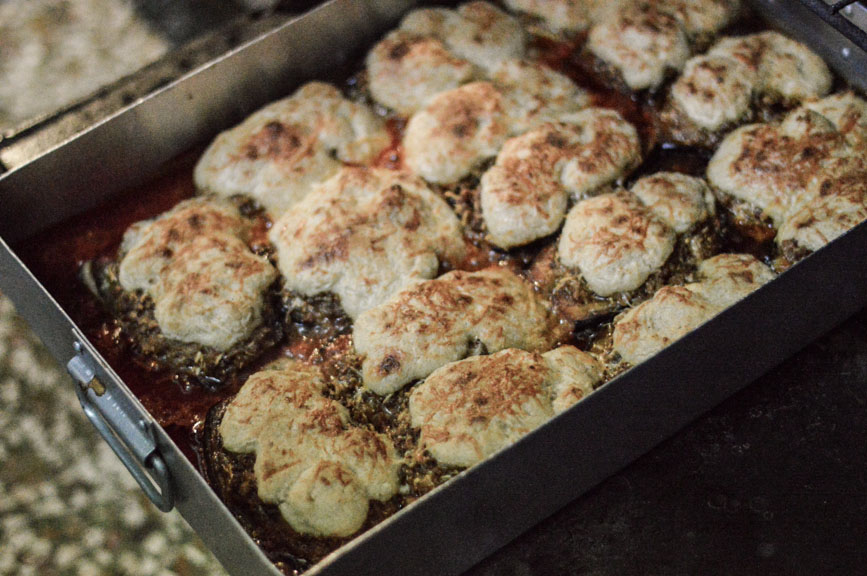
To Assemble
Heat your oven to 250C, most of the components are cooked already, so it is mainly to integrate all the flavours and brown it.
Spoon the meat stuffing into the aubergines, then spoon or pipe the bechamel on top. If you want it to look fancier, you can pipe decorative shapes on top, but otherwise a big dollop should also work.
Sprinkle the parmesan cheese and breadcrumbs on top, more pepper if you like and put it in the oven for about 15 minutes until it is brown and golden.
The little slippers are ready! Usually as a main dish, you would serve two halves per person, though if you are making other dishes, this could serve more people.
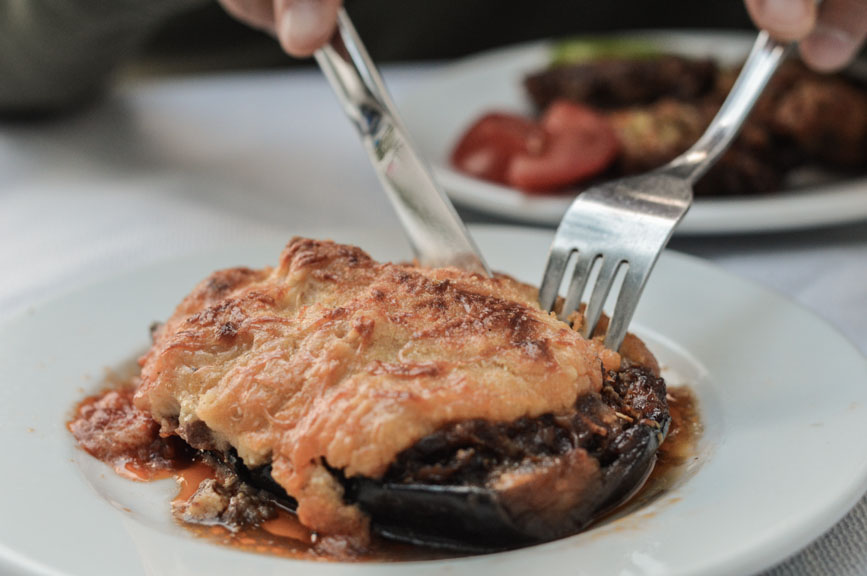






4 Comments
Maria from Nerd Nomads
May 19, 2014Wow, this island Amorgos looks amazing! Love your photos, they are beautiful! Have been to Greece a couple of times, but never to Amorgos. Would love to visit one day. Greek food is delicious, will def try out these lovely recipes! Thanks for sharing! 🙂
tammy
May 20, 2014As always!
Love the way you write! Love the photos !
And will try out the recipes! Thank you!
Tom T. Graeger
October 11, 2014Thanks for the very nice descriptions of the restaurant and the people. I know them since 1982, and Katina was like a second mother to me those years i lived in Aigiali.
You managed to distribute the nice feeling of being in “Katina’s”. Lia, Panagiotis, Puky and Theo continued the warm feeling of genuine hospitality.
Nico & Gabi
December 1, 2014Hi Tom, thanks for your comments. Great to know that you were able to meet and spend time with Katina, she sounds like a wonderful person! As well as her children, they are a lovely family and made our time in Amorgos special.